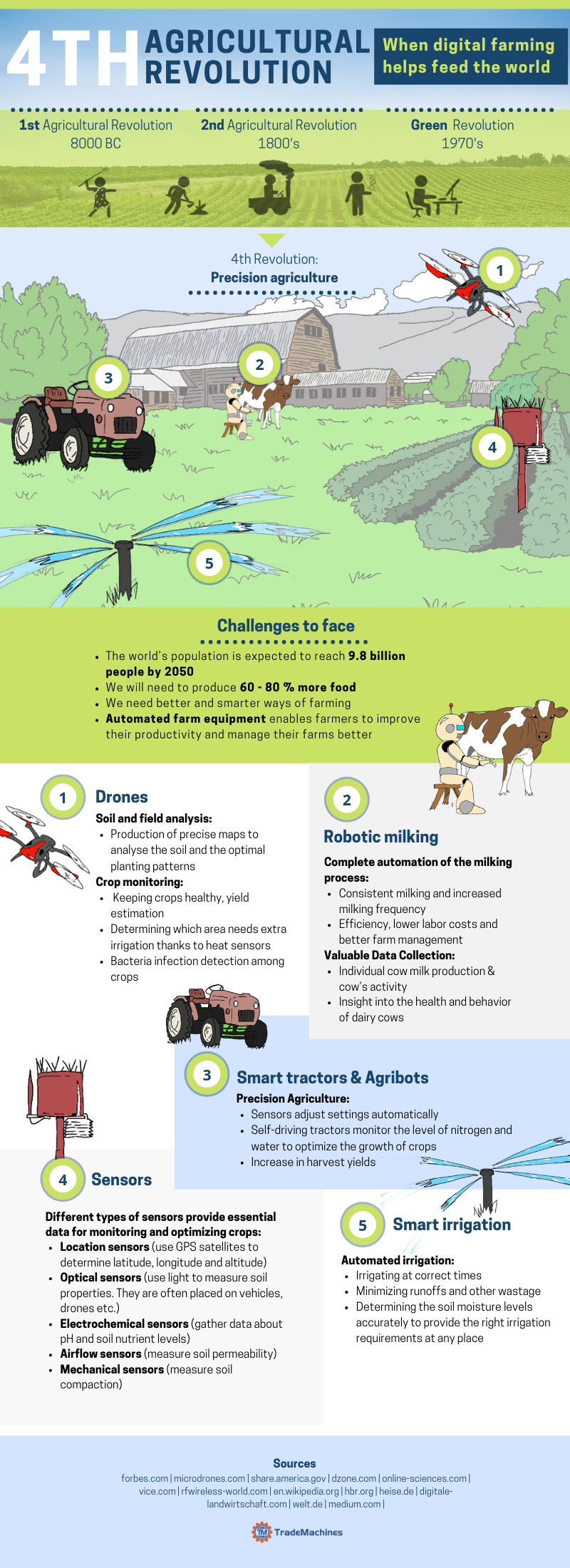How can digital farming help feed the world?
Is agriculture experiencing its 4th revolution? The term Agriculture 4.0 is no longer a neologism, but a synonym for all the technological changes and innovations in the field of smart farming and animal husbandry. But what inventions make farming easier? How technology has influenced agriculture? The list of advancements and smart solutions is long.
Cloud computing, Robotics, Big Data, AI, IoT including aerial vehicles, drones, ubiquitous sensor technology, self-driving tractors, GPS-controlled technology, and many more are applied in agriculture to increase efficiency, improve farming management and optimise farming processes. Cows are milked automatically, without human intervention.
Optical sensors are responsible for plant disease identification and drones monitor crop growth. Furthermore, the technology makes farming more sustainable, minimises waste production and the use of fertilisers and pesticides.
Automation in agriculture is not just a sign of the times. It is a necessity driven by two major factors. The first one is a struggle with insufficient food production for the world’s population, which is growing at a tremendous rate. As estimated, by 2050 the world’s population is expected to reach 9.8 billion people.
Accordingly, to satisfy the escalating needs, we would need the resources of three earths! Another important factor driving the technological development in farming is labour shortage in agriculture, which is at crisis level. This is where the robots step in and lend a hand.
The digital revolution in agriculture also calls for more sustainability and thus turns to the environment. The environmentally conscious society is placing ever greater emphasis on the responsible use of our planet's resources, animal welfare, ecological breeding methods and environmentally friendly cultivation.
Sustainability is at the heart of agriculture, and smart technologies allow us to become even more eco-friendly.






